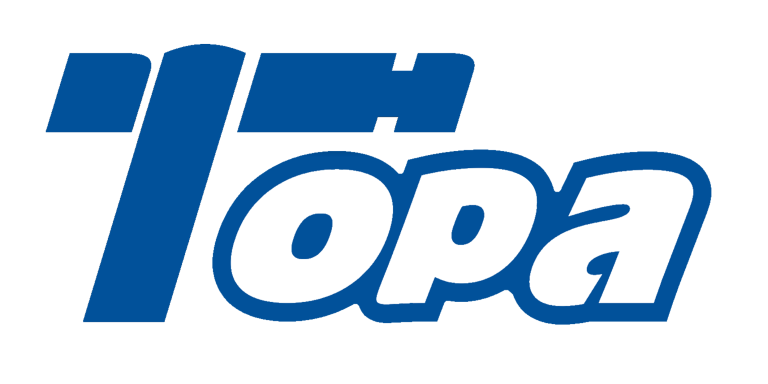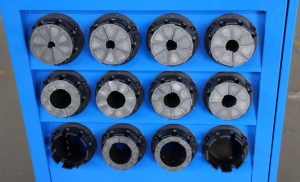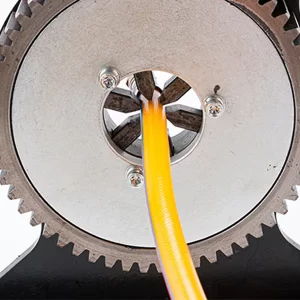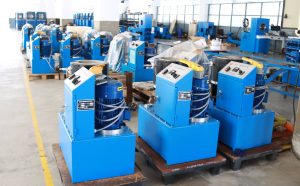Understanding common hydraulic hose crimping problems and how to solve them easily is essential for businesses aiming to maintain operational efficiency and safety. This article, “What Common Hydraulic Hose Crimping Problems Can Be Solved Easily?”, explores typical challenges encountered during hydraulic hose assembly and offers practical solutions to overcome them. But here’s the kicker: addressing these issues promptly helps reduce costly downtime, improve hose reliability, and extend equipment life. Whether you are a maintenance shop, manufacturer, or rental service, knowing these common problems and their fixes can save time and money while ensuring optimal performance.
1. What are the most frequent hydraulic hose crimping challenges?
Several hydraulic hose crimping challenges occur frequently across industries. The most common include inconsistent crimps causing leaks or failures, misalignment of hose fittings, and mechanical issues with crimping machines. This is where it gets interesting: inconsistent crimps often result from worn dies or incorrect pressure settings, leading to hose failure under pressure. Misalignment between the hose and fitting causes poor sealing and premature wear. Mechanical failures, like pump malfunctions or worn hydraulic seals, disrupt production. For example, a construction firm faced repeated hose failures due to incorrect crimp pressures and misaligned fittings, which were solved after recalibrating equipment and operator training. Another company struggled with frequent machine downtime caused by neglected maintenance.
| Challenge | Cause | Impact |
|---|---|---|
| Inconsistent Crimps | Worn dies, wrong pressure | Hose leaks and failures |
| Fitting Misalignment | Improper setup | Poor sealing, early wear |
| Machine Malfunctions | Lack of maintenance | Downtime, reduced output |
2. How can improper hose preparation cause crimping problems?
Improper hose preparation is a root cause of many crimping issues. Neglecting cleaning the hose and fittings before crimping can introduce debris, affecting seal integrity. Cutting hoses inaccurately leads to uneven crimps and potential leaks. Ready for the good part? Ensuring the correct hose length and properly prepared ends improves crimp quality and durability. A manufacturing plant found that switching to precise hose cutters and thorough cleaning protocols reduced crimp failures by 35%. Another firm introduced standardized preparation procedures, significantly lowering rejection rates. Cleanliness and precision in hose prep help maintain consistent crimp quality and prevent premature hose failures.
| Preparation Step | Common Mistake | Solution |
|---|---|---|
| Cleaning Hose & Fittings | Debris contamination | Use cleaning solvents and wipes |
| Cutting Hose | Uneven or incorrect length | Employ precision cutting tools |
| Preparing Ends | Rough or damaged edges | Inspect and smooth edges |
3. What role does crimping die wear play in common issues?
Crimping dies are critical components, and their wear directly affects crimp quality. Worn or damaged dies produce uneven crimps, leading to poor sealing and potential hose failure. But here’s the kicker: regular inspection and timely replacement of dies prevent costly defects. A repair shop noticed increasing failure rates traced to die wear and implemented a monthly die inspection routine. Another company kept an inventory of spare dies to ensure quick replacement, minimizing downtime. Proper die maintenance includes cleaning, lubrication, and storage practices that prolong die life and preserve crimp precision.
| Die Condition | Effect on Crimp Quality | Maintenance Practice |
|---|---|---|
| Worn or chipped dies | Uneven crimps, leaks | Monthly inspections |
| Dirty dies | Poor crimp seal | Regular cleaning |
| Improper storage | Damage and corrosion | Store in protective cases |
4. How does incorrect crimping pressure affect outcomes?
Crimping pressure must be precisely controlled for reliable hose assemblies. Too low pressure results in loose crimps and leaks, while too high pressure can damage hose materials. This is where it gets interesting: calibrating machines to the right pressure for each hose and fitting combination is crucial. An industrial client found that re-calibrating pressures according to manufacturer specifications reduced leak rates by 28%. Pressure settings should be verified regularly using calibrated gauges. Troubleshooting pressure-related issues involves checking hydraulic systems for leaks or blockages and ensuring the crimper’s pressure sensor accuracy.
| Pressure Issue | Cause | Effect |
|---|---|---|
| Low pressure | Incorrect settings or leaks | Loose crimps, leaks |
| High pressure | Over-calibration | Hose damage, failures |
| Pressure fluctuations | Faulty sensors or valves | Inconsistent crimps |
5. What are the consequences of hose and fitting incompatibility?
Using incompatible hoses and fittings causes crimp failures and safety risks. Mismatched sizes or materials result in poor sealing, accelerated wear, or catastrophic failures under pressure. Ready for the good part? Proper identification and verification of hose and fitting specs prevent these issues. A hydraulic service company avoided costly rework by adopting strict compatibility checks before crimping. Another maintenance team implemented barcoding systems to track component compatibility. Ensuring part compatibility improves reliability and extends hose assembly life.
| Compatibility Issue | Result | Preventive Measure |
|---|---|---|
| Size mismatch | Leaks and crimp failure | Verify sizes before assembly |
| Material incompatibility | Corrosion and wear | Use manufacturer-approved parts |
| Mixed specifications | Reduced performance | Standardize components |
6. How can operator error be minimized in crimping processes?
Operator mistakes cause a significant portion of crimping problems. Errors include incorrect die selection, improper hose positioning, or neglecting safety steps. But here’s the kicker: targeted training and clear procedures drastically reduce errors. A repair shop introduced step-by-step checklists and saw error rates drop by 40%. Using visual aids and hands-on training improves operator confidence. Automating parts of the process with semi-automatic or automatic machines further lowers human error. Empowered and trained operators are essential to consistent quality.
| Operator Error | Common Mistake | Solution |
|---|---|---|
| Die Selection | Using wrong die size | Training and labeling |
| Hose Positioning | Incorrect alignment | Visual guides and jigs |
| Safety Neglect | Skipping safety checks | Safety training programs |
7. What preventive maintenance steps help avoid crimping challenges?
Preventive maintenance keeps crimping machines in optimal condition, avoiding many common problems. Regular inspection, cleaning, and lubrication of moving parts reduce wear and breakdowns. What’s the real story? A manufacturing plant scheduled weekly maintenance that cut machine downtime by 35%. Professional servicing ensures hydraulic systems function correctly. Documenting maintenance tasks helps track issues and schedule timely interventions. Preventive upkeep extends machine life and maintains crimp quality consistently.
| Maintenance Task | Frequency | Benefit |
|---|---|---|
| Visual Inspection | Daily or weekly | Early defect detection |
| Cleaning & Lubrication | Weekly or monthly | Smooth operation |
| Professional Servicing | Annually or biannually | Prevents major failures |
8. How do environmental factors contribute to crimping failures?
Environmental conditions like dust, humidity, and temperature affect both the machine and hose materials. Dust contamination can clog hydraulic components or cause uneven crimps. Moisture leads to corrosion or hose degradation. Ready for the good part? Maintaining a clean, climate-controlled workspace reduces these risks. A facility improved crimp quality by installing air filtration and humidity control. Proper storage of hoses and fittings prevents material damage. Awareness of environmental impacts leads to better machine reliability and hose performance.
| Environmental Factor | Impact | Mitigation |
|---|---|---|
| Dust | Hydraulic system clogging | Air filtration systems |
| Humidity | Corrosion and hose damage | Dehumidifiers, proper storage |
| Temperature | Material property changes | Climate control |
9. What are common hydraulic hose crimper calibration issues?
Mis-calibrated crimpers produce inconsistent crimps leading to failures. Calibration can drift over time due to wear or component changes. But here’s the kicker: regular calibration checks using certified tools are essential. One workshop used weekly pressure checks to maintain calibration, reducing rejects by 20%. Calibration includes verifying pressure, die positioning, and machine alignment. Documenting calibration results aids quality control and troubleshooting.
| Calibration Issue | Symptom | Solution |
|---|---|---|
| Pressure drift | Loose or over-tight crimps | Regular gauge checks |
| Die misalignment | Uneven crimps | Adjustment and alignment |
| Machine wear | Inconsistent operation | Periodic professional calibration |
10. How do software or digital control glitches affect crimping?
Programmable crimpers depend on software for precision. Glitches or outdated firmware can cause errors in settings or operation. This is where it gets interesting: keeping software updated and backing up configurations minimizes risk. A plant experienced downtime due to corrupted control software but recovered quickly after a restore. Manufacturer technical support is key for troubleshooting. Regular software audits and operator training on digital controls help prevent issues.
| Software Issue | Effect | Mitigation |
|---|---|---|
| Firmware bugs | Incorrect crimp parameters | Regular updates |
| Data corruption | Machine downtime | Backups and restores |
| Operator errors | Misconfiguration | Training and manuals |
11. What role does quality control play in preventing crimping defects?
Quality control ensures defects are caught early, preventing faulty hose assemblies from reaching customers. Inspections use gauges, visual checks, and pressure tests. Ready for the good part? Implementing frequent quality checks during production reduces costly rework. A supplier introduced in-line inspections, reducing defects by 30%. Documentation of inspections supports continuous improvement and customer satisfaction.
| Quality Control Step | Purpose | Result |
|---|---|---|
| Visual Inspection | Identify obvious defects | Early defect detection |
| Measurement Checks | Verify crimp dimensions | Consistent quality |
| Pressure Testing | Confirm hose integrity | Prevent leaks |
12. How can quick fixes solve common crimping problems onsite?
Many common crimping problems can be fixed quickly onsite without major downtime. Adjusting pressure settings or realigning dies often resolves crimp quality issues. But here’s the kicker: having spare dies and pressure gauges onsite speeds repair. Replacing worn seals or cleaning components prevents machine malfunction. Portable diagnostic tools help identify faults rapidly. One company reduced downtime by 40% through proactive onsite troubleshooting and repair kits.
| Quick Fix | Problem Addressed | Benefit |
|---|---|---|
| Pressure Adjustment | Loose or tight crimps | Immediate quality improvement |
| Die Replacement | Worn or damaged crimps | Restores machine function |
| Cleaning & Lubrication | Hydraulic issues | Smooth operation |
13. How do different hose materials affect crimping challenges?
Different hose materials—rubber, thermoplastic, metal—require tailored crimping approaches. Each material has unique flexibility, pressure ratings, and fitting compatibility. This is where it gets interesting: improper crimping of certain materials leads to failures. For example, thermoplastic hoses may need gentler crimps to avoid damage, while metal hoses require stronger pressure. Understanding material-specific parameters ensures proper crimping. Suppliers often provide guidelines for crimp settings based on hose material. Training operators on these differences improves outcomes.
| Hose Material | Crimping Consideration | Best Practice |
|---|---|---|
| Rubber | Standard pressure and dies | Follow manufacturer specs |
| Thermoplastic | Gentle crimping required | Use calibrated settings |
| Metal | Higher pressure needed | Use robust dies |
14. What are the challenges of crimping high-pressure hydraulic hoses?
High-pressure hoses demand precise crimps to withstand intense forces. Mistakes risk catastrophic failure. Ready for the good part? Safety standards require strict testing and certification of crimps. Specialized crimpers with higher force capacity and advanced controls are needed. Training operators on high-pressure hose handling reduces accidents. A mining company reported zero failures after upgrading to certified high-pressure crimpers and implementing strict quality controls.
| High-Pressure Factor | Challenge | Solution |
|---|---|---|
| Force Requirements | Precise, strong crimps | High-capacity machines |
| Safety Standards | Compliance and testing | Certified crimpers |
| Operator Skill | Handling risks | Specialized training |
15. How can businesses develop a troubleshooting guide for crimping issues?
Creating a troubleshooting guide helps quickly identify and resolve common crimping problems. The guide should list symptoms, causes, and step-by-step fixes. What’s the real story? A supplier developed such guides, reducing service calls by 25%. Training staff on the guide ensures consistent responses. Regular updates based on feedback improve effectiveness. Integrating the guide with digital tools streamlines access.
| Guide Component | Purpose | Outcome |
|---|---|---|
| Problem Identification | Recognize symptoms | Faster diagnosis |
| Cause Analysis | Understand root causes | Effective solutions |
| Step-by-Step Fixes | Clear instructions | Consistent repair quality |
FAQ Section
Q1: What is a common hydraulic hose crimping challenge?
A frequent challenge is inconsistent crimps leading to leaks or failures.
Q2: How does crimping die wear affect hose assembly?
Worn dies produce poor crimps that compromise hose integrity.
Q3: What maintenance prevents crimping problems?
Regular cleaning, lubrication, and calibration are essential.
Q4: How do environmental factors impact crimping quality?
Dust and moisture can affect machine performance and hose conditions.
Q5: What steps help reduce operator errors in crimping?
Training, standardized procedures, and proper tools help minimize mistakes.




